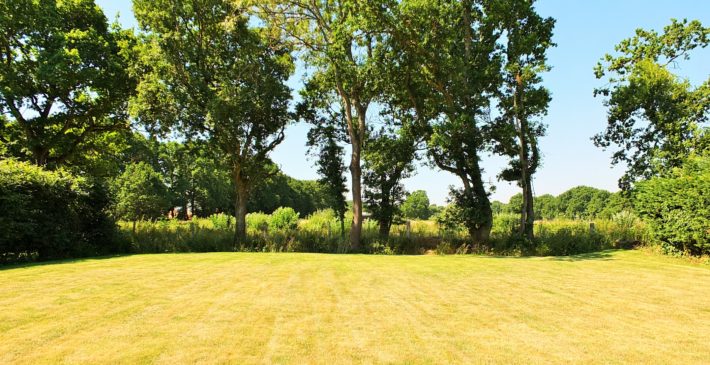Self Build Advice: 2 – Plot Purchasing
Categories: Self Build Advice
So you’ve found a suitable plot of land – congratulations! Now it’s time to ensure that it can deliver on the self-build home you have in mind.

There’s much to think of before committing, it’s an important and expensive decision so it’s worth taking the time to get it right. Here are a few factors to consider before you purchase your plot:
General Advice
You need to know upfront exactly what you are dealing with. The land you build on impacts almost everything about your new home, from how it looks to how much it costs. It’s therefore prudent to analyse the plot early to ensure it really is suitable for your project, to avoid any wasted time, money and effort. Look at the site in terms of opportunities and constraints, you’ll need to examine:
- Space – is there enough room on the site for the size house you are intending to build? Take a look at the orientation and outlook of the space as this will influence the design of your home.
- Levels and Features – is it a sloped site that will require stepped foundations? Are there any trees that may need to be removed, or could potentially have a preservation order on them?
- Location – where you are in the country will affect how much you pay for local trades as well as the style of house you may be able to build. Also, is the area liable to flooding?
- Ground Conditions – soil type affects the foundation system you’ll need to use when constructing your home, this will in turn impact cost. You’ll also need to assess how well the land drains water as this will influence the drainage plans.
- Access – how do you reach the plot of land? Do you need to use land owned by another? If so beware of these ‘ransom strips’. How will construction traffic reach your site? Are there any overhead cables that could cause larger vehicles problems? Is there enough space for your home plus parking/turning circles?
- Services – how will you get utilities to your new home? If current services are on the boundary or the same side of the road as the land then it should be relatively easy and inexpensive to get connected, but if you need to cross the road or further then this creates issues and costs will increase. Where costs of connecting to the mains are extortionate, explore the option of supplying your own energy and water through renewables.
- Legal Covenants – are there any restrictions on what you can do/build on the land?
- Financial Viability – considering the price, the potential concerns above, your plans, and your budget, is the project economically feasible? The cost of the plot should be approximately a third of the value of the resulting house, so you need to calculate estimated build expenses and evaluate market conditions in the area you are looking to purchase in.
Few sites are free from problems so it is essential to survey the land thoroughly before completing a purchase. If you are aware of any issues, then you can address and account for them in your budget and plans.
Planning
A plot of land with planning is the ideal situation, but there are still a few questions to ask before purchase:
- Permission Type – Is the planning for outline or detailed permission? Outline planning permission is consent in principle meaning that the council are allowing development to take place on the site, detailed/full planning permission specifies exactly what is authorised to be built. If the land has full permission and it is for a design you’re happy with, then fantastic! But don’t dismiss a plot if the design doesn’t suit you, you can submit a new application for an altered scheme that better fits with your requirements, this won’t affect the permissions in place. There’s no guarantee of approval, but if the changes are relatively minor then there’s a good chance it will be accepted. Discuss your proposal with the planning officer who handled the original submission to determine the likelihood of acceptance.
- Expiration – There may be consent in place, but when does this expire? Granted permissions usually last three years, if development hasn’t started in this time you will probably have to reapply.
- Conditions – Carefully assess all planning conditions attached to the plot, there may be strict requirements or difficult covenants that must be adhered to that could make it unsuitable for your project.
A plot without planning should be approached with caution. What’s the realistic probability of obtaining planning permission on the site? The cost is fairly low to apply for approval but can dramatically impact the value of the land, so why do you think the seller hasn’t obtained planning before? Looking into the planning history of the plot may reveal the answers to these questions. If you’re keen on the land then seek pre-application advice from the council about the likelihood of a scheme receiving permission, and you can always make an offer to the owner subject to receiving planning consent.
Replacement Dwelling
If you are looking to demolish an existing building to acquire a plot and rebuild in its place, there are some additional elements to assess:
- Asbestos – if the run-down property you’re replacing contains asbestos, this will be expensive to remove and dispose of. A survey on the house may not necessarily alert you to this prior to purchase but it’s worth investigating.
- Demolition – the cost of demolition can run into the thousands, so factor this into your budget for the project.

Comments are closed.